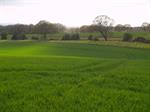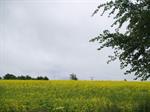Irrigation is critical to profitable farming. Developing a sound understanding of irrigation equipment and practiceswill help you build the skills necessary for working with irrigation equipment and managing water resources properly on a rural property.
- Introduction to Irrigation
- Sources of water
- Soil & water
- How to improve water quality
- Soil Characteristics and Problems
- Understanding soils
- Different soils are suited to different purposes
- Sodicity, pH and salinity
- Drainage, infiltration and uniformity
- Estimating Plant Needs and Irrigation Scheduling
- When to irrigate
- Measuring water availability to plant
- Rooting depths of plants
- Irrigation calculations
- Estimating water requirements of plants
- Crop scheduling
- Water volumes and duration
- Drainage
- Waste water treatment using reed beds
- Suitable plants
- Drainage
- Dams/Water storage
- Improving soils
- Erosion
- Types of Irrigation Systems
- Traveling Sprinklers
- Conventional Systems
- Sprinkler Heads
- Flood Irrigation Systems
- Water Volumes & Duration
- Trickle Systems
- Trickle Irrigation
- Microjet Irrigation Provides Many of the Answers
- Maintaining your Trickle Irrigation
- Trickle Irrigation: Prevention Of Clogging
- Design Specifications
- Pumps & Filters
- Comparison of pump heads
- Pumps & Pressure Systems
- Controllers
- Pumps
- Selecting the Right System for a Plant
- Flood irrigation
- Sprinkler irrigation
- Trickle irrigation
- Irrigation of vines
- Efficient orchard irrigation
- Design & Operation of Systems
- Cyclic watering
- Pulse watering
- Sprinkler spacing
- Electrical factors
- Electric automatic systems
Enrol Today
Ready to get started? Click on the orange enrol now button.
Have questions? Click here to email our course counsellors.
Why is Irrigation Important?

The main objective of irrigation schemes or systems is to produce a particular desired pattern of plant growth. Maximum vegetative growth does not necessarily correspond to maximum yield of the part of the plant desired e.g. fruit, nuts, or roots. In addition, achieving maximum yield may require inefficient use of available resources, whether it is land, water, equipment, or labour. 'Optimum yield' is usually the desired objective. This has been defined as the yield at which the benefit/cost ratio is at maximum, although even this may be hard to achieve if any of the resources required for the irrigation system e.g. land, water, or equipment is limited. Therefore, it is important to clearly define the purpose or desired outcome of an irrigation system.
How Does Water Work With Soil on the Farm
Before designing or operating an irrigation system it is important to have an understanding of the relationship between soil, water and plants. Soil is made up of a framework of solid material comprising particles of varied sizes and shapes which fit together imperfectly to provide a complex system of pores and channels to provide space within the soil for air and water. When these pore spaces are filled with water, the soil is saturated. This may occur after irrigation or rainfall. A soil will only remain saturated if it is below the water table and cannot drain freely. The amount of water a soil can hold at saturation depends on the volume of pore space available. This is known as the saturation capacity of the soil.
Physical Aspects of the soil which must be considered are:
- Soil uniformity
- Available soil water capacity
- Infiltration
- Internal drainage.
Soil Uniformity
The more uniform the irrigation site, the easier it will be to manage. Problems of patchiness can arise, for example, in hand-forming when a cut is made into subsoil that is more clayey or more sandy than the topsoil. So, it is necessary to level the land, examine the soil to the depth of the maximum cut to determine the likely effect on soil texture.
Available Soil Water Capacity
A high level of available soil water capacity is desirable for irrigation because the higher it is, the less likely the plant will become stressed between irrigations. The best soils are generally loams or clay loams. The soil needs to be examined to the likely maximum rooting depth both to determine the available soil water capacity and also to ensure that there is no bedrock, hard pan, or other root-impeding layers.
Infiltration
This refers to process of water entry into the soil. It is influenced by:
- Soil type and soil texture - sandy soils generally have higher long term water penetration rates than clayey soils.
- The condition of the surface soil - water will enter faster if the soil surface is friable and open or is extensively and deeply cracked. Compacted or crusted soil with few cracks reduces infiltration.
- The stability of the surface soil - low water stability means that the soil crumbs do not stay together when wetted. Low water stability results in slow water penetration unless the soil is sandy. Also, it often results in the formation of a surface crust as the soil dries which will reduce infiltration at the next irrigation.
- Depth of soil above an impermeable layer - the soil may consist of a light loamy topsoil over a clayey subsoil or bedrock. In this case, water trapped above the impermeable layer reduces water penetration into the topsoil.
Internal Drainage
Poor internal drainage of soil can result in temporary water logging and loss of productivity. The condition can be made worse so that eventually poor drainage causes permanent water logging and high salinity levels if the land is irrigated. Conversely, soils with excessive drainage properties are undesirable because of the large amount of irrigation water which is necessary to keep them moist. Thus, a slowly permeable clay layer at a depth of one metre is desirable.
Observations of the effect of heavy rain on bare soil can indicate how well a soil will behave under irrigation. Does pooling occur quickly? Does the surface soil structure remain the same when it dries out or does a crust or blotchy layer develop? Such observations, together with laboratory tests like those which can be done by the Department of Agriculture, can greatly assist in the choice of suitable land for irrigation. In order to determine the physical aspects which make a soil suitable for irrigation, one needs a sound knowledge of soil composition, texture, structure, and its moisture characteristics.
Types of Soil Moisture
Soil moisture can be grouped into three types of classes:
- Hygroscopic water, which is a thin film held very firmly to the soil particles so that plants can't remove it.
- Capillary water, which is the main source of water for plant growth. This occurs as thin films of water on the soil particles or as droplets in the pore space and is held in place by surface tension. When gravity has removed all the free water a balance is reached where the surface tension binds all the remaining water so that gravity is insufficient to remove it. This condition is known as field capacity.
- Gravity water, which is the water that can only remain in the soil for a short time before it drains out under gravity.
Who Should Study this Course?

Every farmer, and anyone else who works in farming, can benefit from a better knowledge of irrigation. Some types of farming may be less dependent upon irrigation than other types; but water supply is critical for good growth in crops and farm animals, no matter where you are; and even relatively wet climates can go through periods where water needs to be delivered through irrigation.
Irrigation is an industry that employs people and offers business opportunities well beyond just being the farmer or farm worker though.
Business opportunities exist for starting, operating or obtaining jobs with irrigation equipment manufacturers, irrigation designers, irrigation installers and in the marketing and distribution of irrigation equipment.
If you work in any of these situations (or aspire to), this course could be a valuable step toward developing your skills and opportunities.